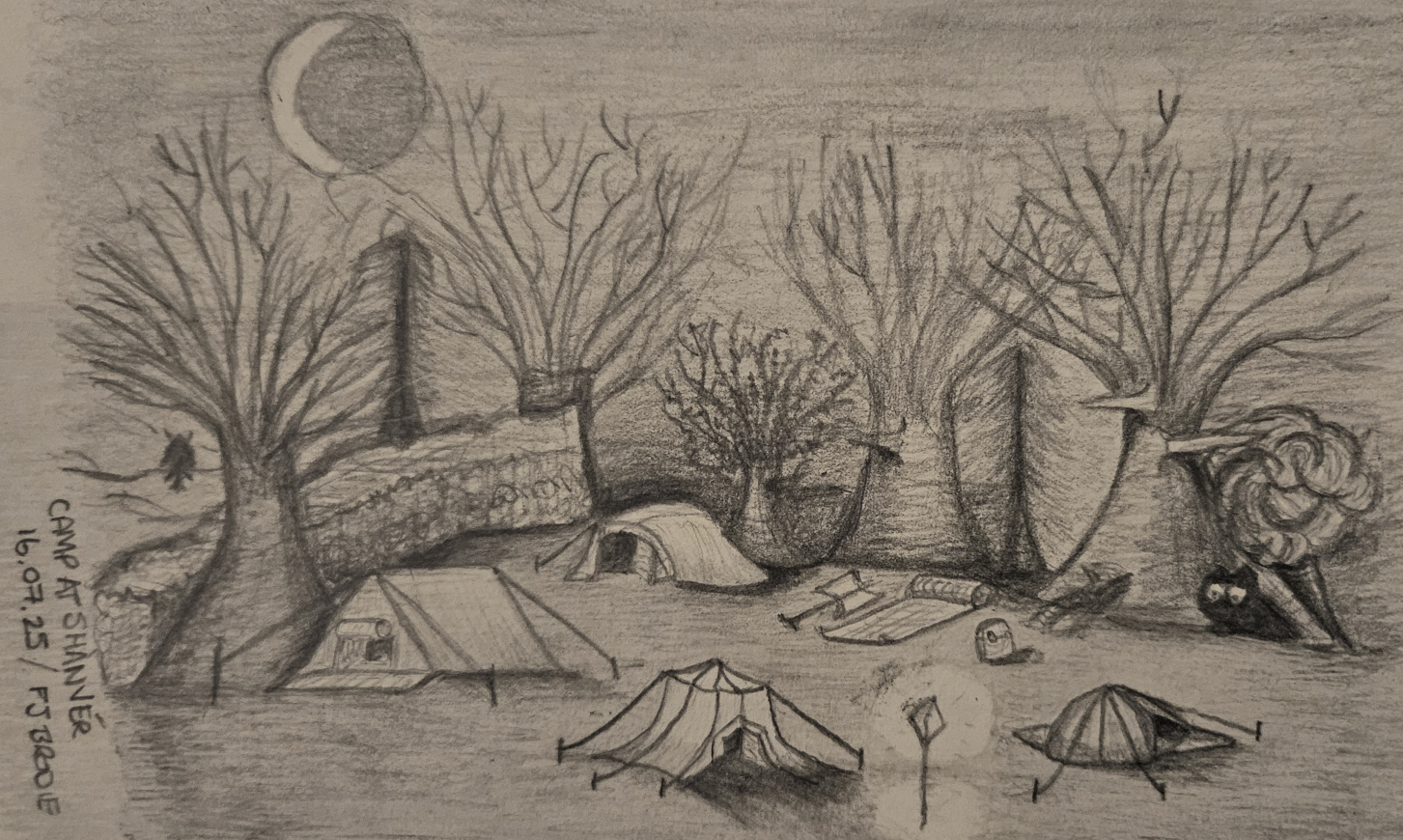Grub Worm
Grub Worms are among Savàni's most carefully evolved micro-beasts. They can also be the most destructive if not kept in balance with their surroundings. They are prey too, however, much to most people's relief. Here is a brief document covering this small creature.
Appearance
The Grub Worm's diameter varies from that of an average seed to a thumb's thickness, depending on its age and how much food it has recently consumed (see: diet). They were also green - which to the reader may seem non-descript - however, the precise shade of green appears to be determined by the colour of the trees and bushes their egg hatched in.Chronicler's Note:
I was "forced" to do a disgusting experiment with these beasts, which involved (at risk to my fingers) transporting some young Grubling Worms to an alternative wood. The shade of green they developed into did not change to that of the new forest. It remained that of their birthplace. Soon after this, I left the Research Group of the Archives and sought refuge in Shevezz. I did not solely retreat there because of Grub Worms, though I wish I had in order to amuse future readers of my works.
Skin
The Grub Worm is very slightly scaley, though insufficient to add it to the Skàlkyn classification. These "scales" are stronger on their "back" - as far as the terms "back" and "underbelly" can be applied to invertebrates that sometimes roll."Flippers"
While it is difficult to find an equivalent among the grubs of Savàni, older Grub Worms appear to develop "flippers". Though they do not seem to use these for movement, they may develop to retain balance as other natural defences begin to fail with age.Head/Mouth
Its distinguishing features compared to a common worm is that it has a fully-functioning mouth, with two rows of tiny teeth. It is, in fact, these teeth that are the way the Grub Worm hatches - it eats through its egg, before consuming it in its entirety. These teeth are effective against plant life and animal hide. It also has eyes that appear, upon close inspection, more like those of a fly than a snake or small lizard.Diet
The Grub Worm's diet can be a help or a hindrance, depending on where you find them:Omnivorous
We have found little that the Grub Worm will not eat - or, at least, try to eat. Whether this is due to an insatiable hunger, or a natural mechanism to assure survival with any food source available, we are unsure. But, in forests, you're more likely to see the Grub Worms eating a killed creature long before maggots and flies reach it. In this aspect, it could be considered a blessing. But in this aspect only. Due to it being an omnivore, it is also a pest, especially in Bevérohii where groves are usually harnessed as fruit farms. It has been a constant project for Natex Farm to keep the Grubs at bay to minimise fruit loss and tree destruction.Digestion
The easiest way to explain to the reader of this tome about the Grub Worm's digestion is to consider how a snake devours its food or prey. It takes it into its body and slowly crushes it, absorbing it into its body over time. This appears to be similar to the Grub Worm, which seems to over-consume "food", before adhering itself to a nearby surface in order to "absorb" it. However, based on observational tests, this is a slow process that could see a fattened Grub Worm remaining inert for two or three Dagà (46-69 Urs).Habitat
Due to the requirement to camouflage, Grub Worms are most commonly found in pure greenwoods, such as the groves of Bevérohii or the Bruhàn Bernarii near to Bezélan. As such, they do not appear in mixed forests such as the Forest of Doon.Chronicler's Note:
Since this document's initial creation, a browner variant has been discovered in the Myrt Wood. It was here, where sand/rock grit storms batter the dead trees, that this worm's "hovering" was seen in dry, but dusty climes.
Defence
The Grub Worm has two distinctive defences, as well as the camouflage afforded to it in green woods:Adhesion
Grub Worms can exude a slime of sorts that adheres it to whichever surface it wishes. This is useful against the wind, but, as its underbelly was its weakest spot, also gave a slight defence against predators. This adhesion is particularly notable on stones and rock, probably due to it being more exposed against a surface it cannot camouflage with. While we cannot state we have evidence, current thought says that this 'glue' is how the Grub Worm gets rid of waste products from its body.Quasi-Flight
When wet, or covered in grit, the Grub Worm can float between leaves or branches, so long as they're in very close proximity. This is not the same as the Aevyen-oriented Hover-Worm as Grub Worms cannot achieve true flight. While not a mystical creature (not even with the most vivid of imaginations), this unusual capability does suggest some influence from Ousii and Erdé in its creation.Predators
Despite their teeth, they are prey to various types of birdlife, including the Mìsii (both Aszilmìsii and Blàmìsii), Aunwi and other carrion birds. While the Grub Worm's colour disguises them, those that have recently consumed meat give away their locations by their odour.This creature, in its basic form was invented by my (currently) 6-year-old daughter during a playtime session. Its colour, the fact that it eats anything, digests slowly, can hover when wet or sandy and is really sticky on rock - all these factors were her invention. I've merely built on those things.
Related Articles
Read Other Works:
Latest Artwork

Camp at Shanvér by FJ Brodie








Comments